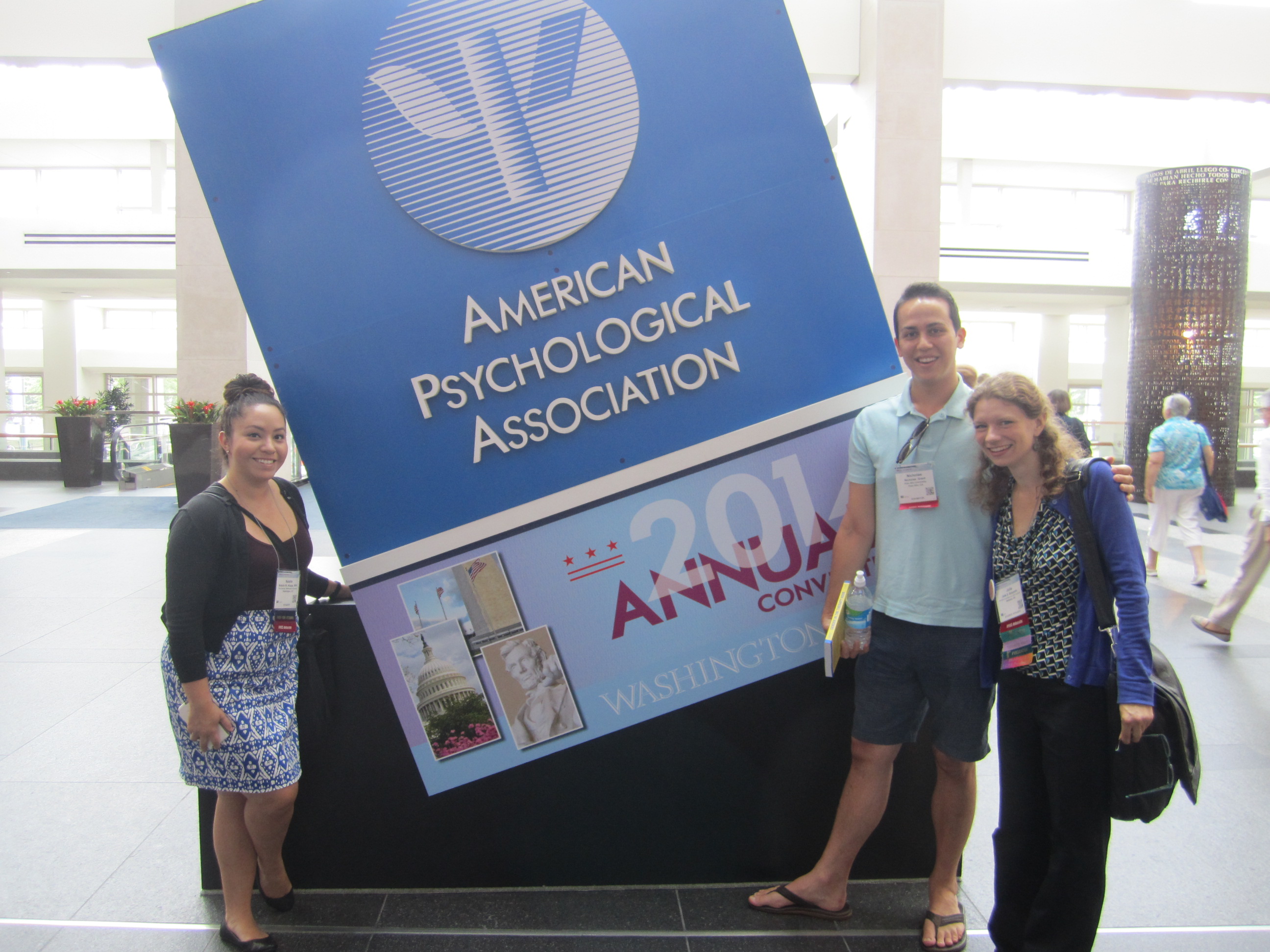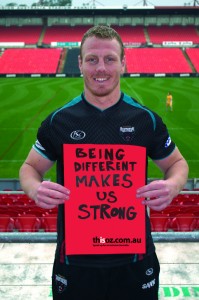![]() I am Gary Howell, an early career psychologist licensed in Florida and Illinois. I am truly honored to receive the inaugural “Guardian of Psychology” Award from the APAGS Advocacy Coordinating Team. While I have so many varied interests in our field, I have found my niche working with the LGBT community.
I am Gary Howell, an early career psychologist licensed in Florida and Illinois. I am truly honored to receive the inaugural “Guardian of Psychology” Award from the APAGS Advocacy Coordinating Team. While I have so many varied interests in our field, I have found my niche working with the LGBT community.
As an openly gay psychologist and professor, I have committed to making the world a better place for students, psychologists, community leaders, as well as clients who identify as lesbian, gay, bisexual, or transgender.
My love of advocacy began as a college student in a very rural town north of Dallas. I attended an honor society convention and saw Jeanne White deliver a touching keynote address highlighting her pain and loss of her young son, Ryan White, who died while battling HIV/AIDS following a blood transfusion. Her story hooked me in and led me to volunteer at a local AIDS Service Organization that served 7,000 square miles in Texas. I served as president of a student HIV/AIDS advocacy group on the Austin College campus around the time Matthew Shepard was beaten to death. The anger and pain we all felt as we huddled around the television in the Student Union building to hear if he survived or not ignited my passion for social justice.
The path to graduate school
Prior to entering graduate school, I spent two years teaching at a therapeutic day school. I was settled in and comfortable with my job, but I felt as though a significant part of me was fading away. I was informally looking at graduate schools and was scheduled to interview at one in NYC around the time of the 9/11 tragedy. As I sat helplessly in Dallas trying to help my young students make sense of the tragedy, I knew it was time to make a change in my life and find a way to reconnect with advocacy. I interviewed at the Adler School of Professional Psychology in Chicago and knew it was a perfect fit for me.
I was settled in and comfortable, but I felt a significant part of me fading away.
By the time I left graduate school, Adler began to infuse diversity and social justice throughout the program. I found my footing again and quickly got as involved as I could in all things related to advocacy, social change, and public policy – a course I later taught at Adler. My mentor Dr. Gregory Sarlo urged me to get involved with the Illinois Psychological Association, so I did. It changed my life, gave me a new platform, and truly catapulted my career in ways I had not imagined for an early career psychologist. I served two elected terms as the chair of IPA’s Sexual Orientation and Gender Identity section. I was able to advocate and secure support of IPA to publicly endorse the removal of Gender Identity Disorder and Gender Incongruence from the DSM-5 in its early stages of development. I am very grateful that Drs. Armand Cerbone and Randy Georgemiller also noticed my passion for advocacy. Their mentoring was and continues to play an integral role in my pursuit of leadership within Division 44 and other divisions.
Organizing for psychology and LGBTQ youth
While serving this role, the entire country began to see the ugly face of homophobia, bullying and suicide surface with the September Kids in 2010. I could not sit by and watch our community wait for others to take the lead again. I organized an emergency call to action and town hall discussion for psychologists, graduate students, religious leaders, and community organizers. I took the talking points from the evening and organized a full-day symposium on anti-gay bullying, homophobia, and suicide among the gay youth population, and created the LGBTQ Youth Taskforce to begin a grassroots initiative to make the journey from the schoolyard to home safer for gay youth.
Teaching and leading by example
I moved to Tampa, Florida in 2011 to begin teaching as a core faculty member at the Florida School of Professional Psychology at Argosy University. I am proud of our accredited program because we keep it relatively small, with great student-faculty ratios for all courses. I am able to mentor students, get involved with extracurricular research projects with my students, and share my passion for advocacy. My students and colleagues know that I will do all I can to recruit others in supporting advocacy. I convinced a group of students to do the Smart Ride from Miami to Key West last November, and we are doing it again this year. I ride for those I have lost to HIV/AIDS, for those who are still very much living the reality of HIV/AIDS, and to prevent some from having to live with HIV/AIDS. I aim to lead by example and wholeheartedly believe all psychologists should.
We can do so much more than just provide psychotherapy and assessment services. Graduate students have the world ahead of them to create their own path in our field. There is a look I see in my students’ eyes, one that truly warms my heart, when they connect the importance of advocacy and the opportunities it affords us as clinicians. I see in them a sudden desire to ‘do’ or be a catalyst for social and systemic change.
Graduate students have the world ahead of them to create their own path. There is a look I see in my students’ eyes when they connect the importance of advocacy and the opportunities it affords us as clinicians.
I am terrified when I occasionally encounter ignorance and intolerance among psychologists — especially their lack of awareness regarding diversity and its pervasive impact on clients they see in practice. Sometimes we have to make easy choices, but many times we have to make difficult choices in our profession. For me, sitting silently by and watching opportunities to affect broken systems disappear is not an option.
Editor’s note: This is an invited blog post. Before Dr. Howell knew he had received the Guardian of Psychology award from the APAGS Advocacy Coordinating Team, he appointed his advisee Krista Kovatch to a leadership role in the Bay Chapter of the Florida Psychological Association, where she will serve as the Social Responsibility Chair. Dr. Howell noted, “This same talented clinician and student nominated me for this amazing award.”




